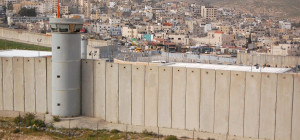As my plane was taking off not too long ago, I looked out to see small herd of cattle grazing in the green space between the highways feeding into the airport and I got to thinking, can progress and the natural world co-exist? Can we as a species honor the natural rhythms of life and our environment and still meet the insatiable demands of humanity.
Progress vs agriculture seems to be a very polarized topic; you are either on the side of environmentalist or the corporate big business. However, if you look around with an observant eye and listen with an attuned ear, there seems to be the small quiet movement that lies in the middle. It’s a tiny flame kindled by a realization that the answer might not be on the extreme side but where the two side blend together like the cows grazing only feet from the high speed urban life. If we lift the stones of this small collaborative movement, we find innovators who managed to make it work.
A good example of this is horse farm only just a few miles from downtown surrounded on all sides by housing developments. This fifty acre oasis serves the community, is self-sustaining and is protected farmland thanks to the neighbors that surround it. According to the EPA (environmental protection agency) almost 30 million acres of land in the US has been developed from 2000 to 2012. However, the largest percentage of farm land is in smaller farms. Protecting and growing those smaller farms allows for development of some a portion of the land while giving space for agriculture. It is a simple shift in mindset from traditional ideas of sprawling rural farms to the idea of small micro farms intermingled with urban sprawl. The location of this farm used to be thought of as very rural just 15 years ago and is now considered a major suburb of the city. If some of the small land tracts can be preserved as green space within major development and city planning proposals they can serve as the same type of oasis allowing children that grow up in more urban areas to experience the benefits of growing food and caring for small animals.
Another example is the small but growing movement in some cities is clearing a large section of dilapidated or abandoned houses and redeveloping them into small live and work communities. Instead of developing virgin farmland, attention can reinvest into the more undesirable places to live and overhauled to give new life in urban areas. These small pockets of renovated areas can reduce crime by shrinking the areas where it thrives, bring the younger homeowner to aging areas and rethink city planning with new ideas including increased green space and safer walking or biking areas. You might even see goats included in the planning depending on where you live. Goats have stomachs of iron and have are now being used to mow down brush on vacant lots where it can become overgrown. In a San Francisco park, goats have been used to help keep land tame rather than other practices such as controlled burnings and herbicides.
The rate at which technology is advancing is faster than anything we have seen in human history. If there is one thing that both sides can learn from each other as it relates to technology is to slow down. The feverish fast pace at which we are moving forward is faster than we can account for the consequences of our actions. Slowing down would not only benefit our environment by slowing the effects of our current practices, it would benefit business through the health of the workforce. While technology serves to make our lives better the rate at which we turn it out kills us. You have to create apps stress reduction apps to help deal with the stress of creating the apps! Again it is a small shift in our mindset that slowing the pace helps us create higher quality products with a greater purpose by taking the time to think through actions all the way to conclusion. Our ancestors had some pretty good ideas about how to find the middle ground of providing what we needed while living in a more harmonious way with the natural world. It’s funny that we are moving so fast ahead to solve our problems when some of the answers lie behind us.
This is an issue that many in the conscious community struggle with. We are caught in the world where we understand there are consequences of our actions but there are the needs of humanity to be met. We teeter on the edge of a knife where if we stray too much to one side or the other we risk self- destruction. The question still remains of how we satisfy the demands of the world and protect it at the same time. How do we survive this explosion of growth while the rate of our advancement strives to beat our self-destructive nature in the race for survival? We all know what we must do but sometimes feel powerless to do what it takes. I find myself giving in to the demands of society and making decisions I know are harmful out of convenience and sanity. However, it is the awareness that comes first. That awareness leads to the shift in thinking we are going through right now. That shift creates the small whisper of change we hear and the small flicker of flame we see. And just as a whisper turns into a booming call and the flame a roaring fire, we can survive this societal adolescence and find that common ground that will ultimately bear the solutions to the problems that we face.








